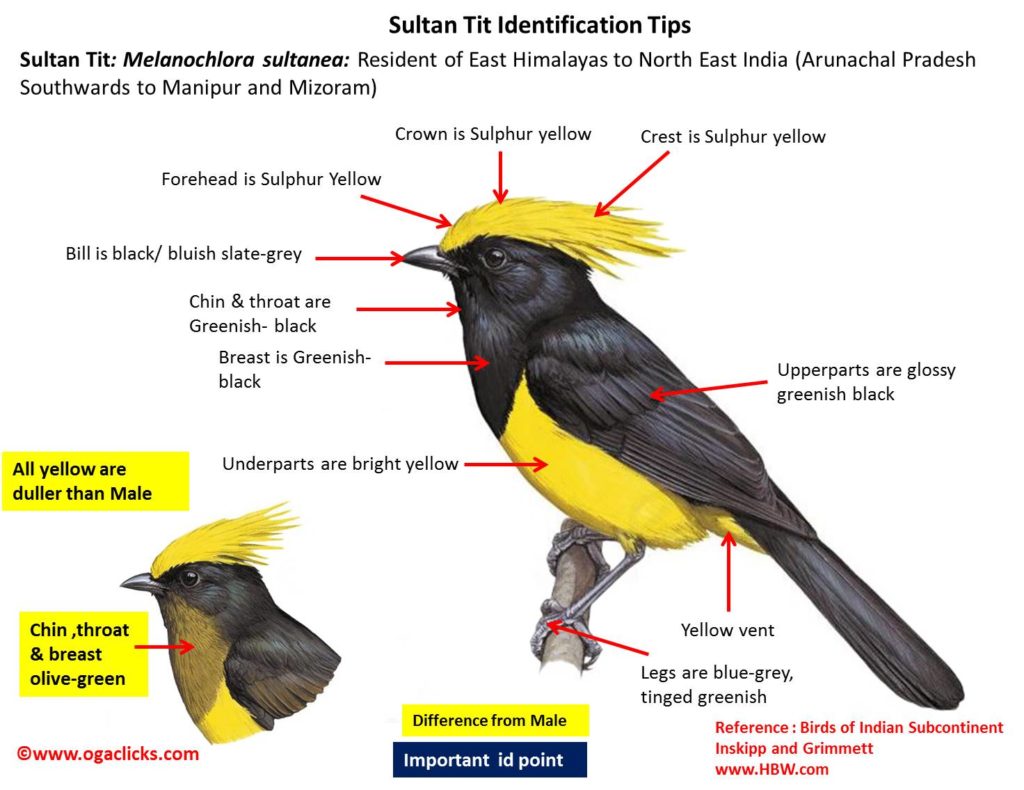Sultan Tit

Sultan Tit Melanochlora sultanea
- Melanochlora : Greek Word melas –black; khloros- green, yellow
- Sultanea : Latin word for Sultan; Arabic word al-sultan – the power, sultan, sovereign
Vernacular Names: Cachar: Dao-rajah-gatang-lili, Lepcha: Bon-tylia-pho
Distribution in India: Resident of Central and Eastern Himalayas and North East, hills in India.
Description: Size of 20–21 cm; Wt. of 35–49 g. It is the largest member of Tit family. It has strikingly black and yellow colour, with long bright yellow (or black) floppy crest, long and slightly graduated tail. The male of nominate race has forehead, crown and crest bright sulphur-yellow; rest of head, upperparts, including wing and tail, and chin, throat and breast are glossy greenish-black. The outer tail feathers are narrowly tipped whitish. The underparts below breast, including axillaries and underwing-coverts, are bright yellow. The iris is brown to reddish-brown; bill is black or bluish slate-grey; legs are blue-grey, sometimes tinged greenish. The female is like male, but slightly duller or sooty brown, and glossed greenish. The juvenile is like female but lacking gloss, has crest shorter and more rounded, narrow pale yellow or whitish tips on greater coverts and occasionally primary coverts, underparts are duller yellow. The young male may show bluish gloss on upperparts from early age.
Habitat: It is found in edges of lowland and submontane deciduous, mixed deciduous and evergreen forests, also light forest with bamboo, secondary growth, scrub and edges of cultivation. It breeds mostly below 1600m
Food habits: It eats small invertebrates and larvae, like grasshoppers and crickets, mantises and spiders and some fruit, mainly berries, also seeds. It is found in pairs and in family groups. It is also found in mixed-species foraging flocks with Sibias and other small babblers. It forages in foliage of upper and canopy levels of trees. It also sits in the open on tops of trees; occasionally also in middle levels or tops of taller undergrowth and bamboo. It is active and somewhat acrobatic in foraging motions, but rather more lethargic than other Tits and movements often rather stiff. It flits between branches, and agile when in flight through forest, but in open areas flight fairly fast and bounding. It gleans items from substrate; also hovers briefly on outside of foliage, and catches insects in flight.
Breeding habits: They breed in Mar–Jul. The nest is composed mostly of grass, green moss, plant down and fibres, leaves and animal hair, placed above ground in hole, crevice or cavity in tree. They lay a clutch of 5–7 eggs.